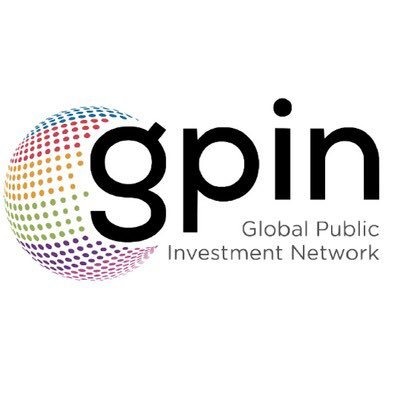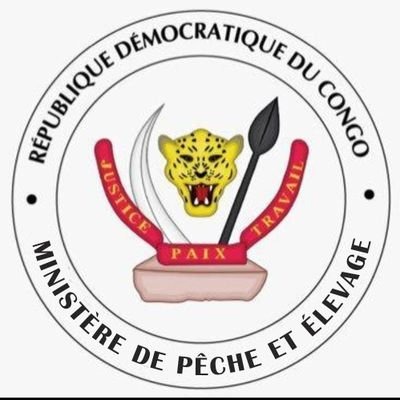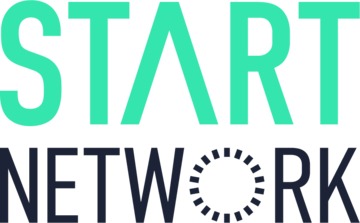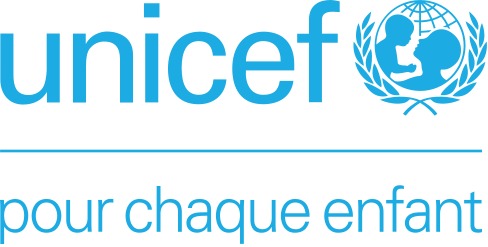Humanitarian
Action for Africa
We only have what we give!
Nous n'avons que ce que nous donnons
We only have what we give!
Nous n'avons que ce que nous donnons
The year 2025 will forever be etched in the collective memory of the Democratic Republic of Congo as one of the most painful chapters in its recent history. The resurgence of armed conflicts, the dramatic fall of strategic cities like Goma and Bukavu, repeated violence in Ituri, et lesmassive population displacements throughout the East have plunged millions of families into indescribable distress.
In this context of extreme urgency, Humanitarian Action for Africa (HAA) reaffirms its unwavering commitment alongside affected populations. As a national organization rooted in field realities, HAA deploys its efforts in the most vulnerable areas to provide rapid humanitarian assistance, inclusive and dignified, in close coordination with local structures, authorities, and technical and financial partners.
Through our 2025 humanitarian response plan, we are mobilizing around four essential pillars: :
food and nutritional assistance,
access to basic services,
protection of vulnerable people,
and the revival of livelihoods.
Each intervention will be driven by our vision of accessible, dignified, inclusive, and gender-sensitive aid, and will rely on an integrated community-based strategy fostering local resilience.
We express our deep gratitude to the partners who, despite logistical and security challenges, continue to show constant and courageous support. However, in view of the growing scale of needs, an intensification of mobilization and international solidarity is indispensable.
Today more than ever, the unity of our humanitarian action is the bulwark against neglect and indifference. HAA will continue to work, with faith, determination, and professionalism, to restore hope, dignity, and a future to those who have lost everything.
May our shared solidarity be a light in the darkness of suffering. Together, let us leave no one behind.The Democratic Republic of Congo (DRC) in 2025 is plunged into a humanitarian crisis of unprecedented intensity. This vast country is facing a multidimensional crisis combining worsening security instability, accelerated degradation of basic social services, proliferation of epidemics (cholera, measles, Mpox), recurring effects of climate change, and endemic structural poverty.As of today, more than 25.4 million people are in need of humanitarian assistance, including are in need of humanitarian assistance, includingdirect victims of conflicts, disasters, or institutional neglect.
Since the Capture of Goma by M23 in late January 2025,the situation in North Kivu has dramatically worsened. Hundreds of thousands of civilians have been displaced,humanitarian corridors interrupted, and entire areas, notably Rutshuru, Masisi, Lubero, and Walikale, are left without secure access to vital aid. Walikale, Attacks on humanitarian facilities, including the looting of a medical organization, have deprived thousands of people of access to nutritional and curative care.
The resumption of intergroup clashes in Rutshuru has forced many households to flee for the second or even third time,revealing widespread physical and psychological exhaustion. Meanwhile, access roads,,damaged or controlled by armed factions, limit logistical capacities, even for UN agencies.
In South Kivu, the situation is equally concerning. Since March 2025, armed clashes have caused the displacement of more than 70,000 people in the territories of Fizi, Kalehe, and Mwenga. Mass sexual violence, kidnappings, and village burnings have been documented, particularly in the areas of Minembwe, Lulenge, and Mubimbi. Tens of thousands of families are now living in the open, without access to drinking water, medical care, or minimal shelter.
The cholera outbreak affecting Uvira and Ruzizi has already caused over 240 cases and 10 deaths in just a few weeks, aggravated by shortages of supplies at the Sange treatment center. Security access restrictions, reduced funding (notably from BHA/USAID), and collapsing road infrastructure make humanitarian response extremely complex.
In Ituri, armed groups, particularly the milices CODECO et Zaïroises took advantage of the focus on North Kivu to intensify their attacks,,targeting civilians, farmland, and mining sites. These acts of violence prevent any return process and contribute tothe province's chronic instability. However,over 1,000 fighters have been demobilized since January thanks to the joint efforts of MONUSCO and national authorities under the disarmament program.
Faced with the growing fragmentation of the country, the Head of State issued a solemn call for national unity in early March 2025, urging all social, political, and religious forces to rally around a common project for peace and sovereignty. This call follows broader consultations led by CENCO (National Episcopal Conference of Congo) and ECC (Church of Christ in Congo), which brought together community leaders, conflict survivors, and civil society representatives to chart a path toward national revival.
In the same momentum, the international community has imposed new targeted sanctions against the leaders of the M23/AFC and several Rwandan personalities accused of interference, human rights violations, and obstruction of humanitarian aid. While these measures aim to curb escalation, they also generate diplomatic tensions, , une heightened polarization, and a radicalization of war rhetoricin certain areas.
In summary, eastern DRC is experiencing a total crisis,which cannot be contained without an integrated approach combining humanitarian response, political dialogue, military de-escalation, and massive re-engagement of technical and financial partners. More than ever, enhanced coordination, coherent international solidarity, and inclusive national mobilizationare essential to break this vicious cycle of violence and humanitarian collapse.
The Democratic Republic of Congo (DRC) continues to face one of the world’s longest, most complex, and most forgotten humanitarian crises. In 2025, 25.4 million people are in need of multisectoral humanitarian assistance, including over 7.8 million internally displaced persons. .This situation is exacerbated by the sharp rise in armed conflicts, worsening economic conditions, recurring epidemics, and the progressive collapse of basic social systems.
The provinces of Ituri, North Kivu, and South Kivu are the most affected by the crisis. The escalation of armed conflict, notably between the FARDC and the M23, supported by external forces, has worsened population displacement, violence against civilians, and humanitarian access.
In Goma and the territories of Rutshuru, Masisi, Lubero, and Walikale, the situation remains unstable, with thousands of people displaced for the second or third time.
In Ituri, CODECO and Zairean militias target civilians, even in displacement sites, threatening agricultural livelihoods and food security.
In South Kivu, particularly in Kalehe and Fizi, intercommunity conflicts and armed groups have caused massive displacements (over 70,000 people), with very limited access to healthcare, water, education, and protection.
Major assessments (HNO 2025, IPC, OCHA Sitrep) identify the following critical needs:
Access to food and response to acute food insecurity (over 25 million people in IPC Phases 3 and 4);
Access to clean water, hygiene, and sanitation, especially in areas where displaced populations are concentrated;
Multisectoral emergency assistance for newly displaced populations (shelter, primary healthcare, nutrition, NFI);
Rapid recovery of livelihoods, including agricultural support and local microeconomy initiatives.
The 2024–2025 humanitarian strategy in the DRC is based on the following priorities:
An integrated multisectoral approach, ,combining protection, food security, health, and WASH around displacement concentration areas;
Targeted emergency interventions in hard-to-reach areas, through multisectoral mobile teams (ERM) and rapid response mechanisms (RRMP, RRM, CASH);
Strengthening humanitarian logistics in strategic hubs (Goma, Bukavu, Bunia), notably through warehouse pooling, pre-positioning of stocks, and improvement of supply routes;
Inclusion of accountability, gender, PSEA, and protection principles in all response activities;
Strengthened partnerships with local actors and consolidation of community capacities for a more sustainable and context-specific response.
Beyond the alarming figures linked to conflicts and massive displacements, the humanitarian crisis affecting the Democratic Republic of Congo in 2025 reveals a érosion profonde du tissu social, un deep erosion of the social fabric, a weakening of local capacities, and widespread humanitarian fatigue, both among affected populations and humanitarian actors. The simultaneity of armed, health, climate, and economic shocks is creating unprecedented pressure on communities already weakened by decades of chronic instability.
The eastern provinces, particularly North Kivu and South Kivu, are experiencing a progressive breakdown of traditional resilience mechanisms. Community solidarity networks are overwhelmed, Community solidarity networks are overwhelmed,
At the same time, psychological trauma linked to violence, repeated losses, and social despair is becoming a silent but widespread phenomenon, affecting both adults and children. In areas such as Kalehe, Shabunda, or Lubero, thousands of children live without access to stable schooling or safe spaces, which heightens their exposure to armed recruitment, exploitation, or forced migration.
The combination of conflicts with recurrent environmental shocks— floods, landslides, river overflows—worsens the loss of agricultural land, destroys humanitarian infrastructure, and isolates the most remote communities. These hazards disrupt agricultural seasonality and plunge entire households into chronic food insecurity, even outside direct conflict zones.
Finally, the progressive withdrawal of some humanitarian actors from areas deemed 'too risky' or 'inaccessible' creates an operational vacuum, quickly filled by armed groups or informal survival mechanisms, often contrary to humanitarian principles.

Humanitarian Action for Africa (HAA) is a humanitarian organization founded on Christian values, working to meet urgent and development needs in the DRC, with a particular focus on vulnerable and marginalized populations. HAA adopts an integrated approach to ensure accessible, dignified, and inclusive aid, involving all social categories (gender, age, religion, ethnicity, marginalized groups, displaced persons, returnees, host families, etc.).
To contribute to a world where every individual, regardless of gender, origin, or situation, lives in dignity, equity, and security, and fully participates in the development of resilient, inclusive, and prosperous communities.
Humanitarian Action for Africa's mission is to intervene to save lives, relieve human suffering, and safeguard people's dignity.
HUMANITARIAN ACTION FOR AFRICA (HAA) aims to:
Serve human development, realize Human Rights, and support sustainable and equitable development, with and for the most disadvantaged populations;
Provide humanitarian assistance and solidarity actions for vulnerable populations (victims of war, natural disasters, political, ethnic, economic or social oppression, ecological threats, or any other emergency or underdevelopment situation), to meet their primary (vital) needs.
Humanitarian Action for Africa
HAA's activities focus on several humanitarian and development areas, including:
Emergency Response and Humanitarian Assistance: Provision of multisectoral aid (health, water, hygiene and sanitation, shelter, protection) in humanitarian crisis contexts.
Promotion of Gender Equality and Social Inclusion: Awareness-raising and community capacity-building to promote women's rights and gender equality in interventions.
Skills Development and Education: Programs for inclusive education and vocational training for youth, particularly in crisis-affected communities.
Disaster Risk Reduction (DRR): Prevention activities and local capacity-building to address climate change and natural disasters.
Protection and Assistance for Displaced Persons: Assistance and support to displaced individuals, with a special focus on children, women, and vulnerable groups.
HAA maintains a work environment that fosters personal and professional growth for all employees and revolves around six principles:
Ownership
Integrity
Transparency
Respect
Excellence
Collaboration
HAA enjoys a solid reputation for collaboration with its partners.
The organization is also certified with the following identifiers:
USAID (UEI: HH7XN5AH3T15)
NGAGE Code: SQHJ8
EuropeAid ID: CD-2024-CBB-2604125231
Humanitarian Action for Africa (HAA) possède une solide expertise dans la gestion de projets à risque modéré à élevé, acquise à travers ses interventions dans des zones touchées par des conflits, des déplacements massifs de populations et des crises humanitaires complexes en République Démocratique du Congo (RDC).
Governance Structures and Risk Management: HAA has established rigorous governance with integrated risk management systems. The organization systematically assesses operational contexts to identify and mitigate potential risks, whether security, financial, operational, or related to beneficiary protection. It implements contingency and crisis management plans tailored to high-risk environments, thus ensuring continuity of activities even in unpredictable contexts.
Expertise in Sensitive Areas: HAA has worked for years in regions such as South Kivu, Maniema, and North Kivu, characterized by armed conflicts, population displacements, and intercommunity tensions. These experiences have enabled it to develop a deep understanding of local dynamics and to collaborate effectively with local authorities, community leaders, and international partners to ensure project success.
Enhanced Operational Capabilities: The organization has a well-trained multidisciplinary team capable of working in difficult conditions. Staff members are regularly trained in security, risk management, child protection, PSEA (Protection against Sexual Exploitation and Abuse), and financial management. HAA also uses digital tools for real-time monitoring and evaluation, ensuring effective project supervision.
Integrated and Inclusive Approach: HAA adopts an integrated approach to ensure accessible, dignified, and inclusive aid, involving all social categories (gender, age, religion, ethnicity, marginalized groups, displaced persons, returnees, host families, etc.). By placing local communities at the heart of its interventions, HAA ensures that the specific needs of the most vulnerable groups are systematically taken into account.
Promotion of Gender Equality and Gender Mainstreaming: HAA aims to promote gender equality and integrate gender considerations into all aspects of its activities. The organization includes gender-related concerns in the analysis, planning, and implementation of projects to promote gender equality in all development activities. It also advocates for equality values within its teams, offering equal opportunities to men and women. HAA ensures gender sensitivity in all its projects, while giving children, both girls and boys, the same opportunities to acquire skills to contribute to the development of their communities.
Strategic Partnerships and Local Collaboration: HAA collaborates with local, national, and international partners to strengthen its intervention capacity. These partnerships allow for resource pooling, improved understanding of local contexts, and a rapid, coordinated response to crises.
Transparent Financial Management: The organization applies strict financial policies, including regular internal and external audits, ensuring integrity in fund management, even in high-risk contexts. These measures minimize the risks of corruption and misuse of resources.
Protection-Centered Approach: HAA adopts a human rights-based approach, with particular emphasis on protecting vulnerable groups, especially women, children, and displaced persons. The organization ensures that its actions comply with international humanitarian standards and the 'do no harm' principles.
Governance Structures and Risk Management: HAA has established rigorous governance with integrated risk management systems. The organization systematically assesses operational contexts to identify and mitigate potential risks, whether security, financial, operational, or related to beneficiary protection. It implements contingency and crisis management plans tailored to high-risk environments, thus ensuring continuity of activities even in unpredictable contexts.
Expertise in Sensitive Areas: HAA has worked for years in regions such as South Kivu, Maniema, and North Kivu, characterized by armed conflicts, population displacements, and intercommunity tensions. These experiences have enabled it to develop a deep understanding of local dynamics and to collaborate effectively with local authorities, community leaders, and international partners to ensure project success.
Enhanced Operational Capabilities: The organization has a well-trained multidisciplinary team capable of working in difficult conditions. Staff members are regularly trained in security, risk management, child protection, PSEA (Protection against Sexual Exploitation and Abuse), and financial management. HAA also uses digital tools for real-time monitoring and evaluation, ensuring effective project supervision.
Integrated and Inclusive Approach: HAA adopts an integrated approach to ensure accessible, dignified, and inclusive aid, involving all social categories (gender, age, religion, ethnicity, marginalized groups, displaced persons, returnees, host families, etc.). By placing local communities at the heart of its interventions, HAA ensures that the specific needs of the most vulnerable groups are systematically taken into account.
Promotion of Gender Equality and Gender Mainstreaming: HAA aims to promote gender equality and integrate gender considerations into all aspects of its activities. The organization includes gender-related concerns in the analysis, planning, and implementation of projects to promote gender equality in all development activities. It also advocates for equality values within its teams, offering equal opportunities to men and women. HAA ensures gender sensitivity in all its projects, while giving children, both girls and boys, the same opportunities to acquire skills to contribute to the development of their communities.
Strategic Partnerships and Local Collaboration: HAA collaborates with local, national, and international partners to strengthen its intervention capacity. These partnerships allow for resource pooling, improved understanding of local contexts, and a rapid, coordinated response to crises.
Transparent Financial Management: The organization applies strict financial policies, including regular internal and external audits, ensuring integrity in fund management, even in high-risk contexts. These measures minimize the risks of corruption and misuse of resources.
Protection-Centered Approach: HAA adopts a human rights-based approach, with particular emphasis on protecting vulnerable groups, especially women, children, and displaced persons. The organization ensures that its actions comply with international humanitarian standards and the 'do no harm' principles.
En conclusion, grâce à une gouvernance solide, une équipe expérimentée, des outils performants et des partenariats stratégiques, HAA est bien équipée pour gérer des projets à risque modéré à élevé, tout en garantissant des résultats durables et en minimisant les impacts négatifs sur les communautés qu’elle sert.
HAA's code of conduct demonstrates zero tolerance for sexual exploitation and violence, harassment, abuse of power in all its forms, fraud, and corruption in all HAA's activities and responsibilities, both at the organizational and program levels, in humanitarian intervention and development work according to the rules provided for this purpose. In case of violation of the code of conduct, appropriate procedures and disciplinary measures apply in accordance with the Humanitarian Action for Africa staff policies.






HUMANITARIAN ACTION FOR AFRICA (HAA) is a non-governmental organization with a strong capacity to manage multisectoral emergency and development projects thanks to its qualified and competent staff, its policies, missions and values, as well as its administrative, financial and accounting procedures manual, which is adapted to the context of its intervention area and the requirements of several donors.
City of Bukavu, Ibanda Commune, Q. Ndendere, Av. des ouvriers N˚004
info@h-action-africa.org
+243 819 914 191
Bank: Trust Merchant Bank S.A. (TMB)
Account number: 00017-22004-47011020001-51
Swift: TRMSCD3L
Country: DR Congo